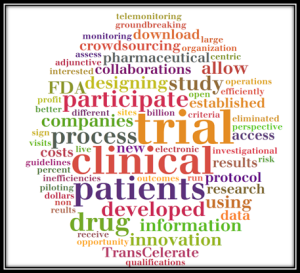FDA and Valor
Lessons Learned from the Valor Medical Case
by DeeAnn Visk
On Thursday, April 17th,
the San Diego
Clinical Research Network (SDCRN) and the San
Diego Regulatory Affairs Network (SDRAN) held a joint meeting at
CareFusion entitled “Increased Focus on Enforcement in Clinical Research –
Lessons from Recent Cases.”
Clinical research activities
are currently subject to unprecedented government scrutiny, as evidenced by
many recent settlements between the U.S. Department of Justice (DOJ) and both
medical device and pharmaceutical companies. Typically, government
investigations focus sales and marketing practices; they have now expanded to
include research and development activities.
Thomas W.
McNamara,
a white-collar defense attorney from Ballard Spahr LLP in San Diego, presented
the case of “Valor Medical: A Local Prosecution with Universal Lessons.” McNamara, a former federal prosecutor, discussed
the case against the San Diego biomedical device maker Valor Medical. They have been prosecuted for not including
two negative lab test results in their 2008 Investigational Device Exemption
(IDE) application.
 |
| Word Cloud from McNamara talk |
The case began with the company
filing their IDE in 2008, and ended with the U.S. Attorney’s Office filing
criminal charges against the company and its officials in 2014. McNamara concluded that the company’s lack of
transparency, and failure to grasp the seriousness of the FDA’s inquiry,
combined with Murphy’s Law to produce “a perfect storm” of events, ending with
criminal charges against the company and four of its leaders. How did they get
into this mess?
In 2007, the company began
seeking pre-market approval for their product Neucrylate, which was implanted
via catheter to treat aneurysms. Upon
its contact with blood, Neucrylate becomes sponge-like, thereby stopping
life-threatening hemorrhages. Chromosomal assay (CAA) and mouse lymphoma assay
(MLA) tests were done, and indicated that Neucrylate was cytotoxic and
mutagenic.
The company decided did not include these tests in
Valor’s IDE application to the FDA in 2008. FDA regulations require that all results of any animal tests be included in IDE's. The IDE was rejected. In 2009, Valor's regulatory consultant left the company with
hard feelings—he had also been a member of the Board and was removed from this
position. Unbeknownst to Valor, he
reported to the FDA the company’s failure to include the CAA and MLA tests in
their application to conduct clinical testing.
In 2010, the company filed a
new IDE for Neucrylate, again omitting the CAA and MLA test reports. The FDA
then inspected their site for two days, during which the company’s leaders were
not forthcoming about the tests. Meanwhile,
a lower-level employee told the FDA that there was an intentional decision to not
include these test results.
In 2011, FDA sent Valor a
warning letter
indicating their failure to include reports of all prior clinical, animal, and
laboratory testing of the device in their IDE.
Valor’s management responded that the omission of the animal tests was
“inadvertent”, blamed it on the change in regulatory personnel, and claimed the tests only
came to their attention in February 2011.
“Remember,” warned McNamara, “the ‘e’ in email stands for evidence.”
The FDA then turned to the U.S.
Attorney General’s Office, which issued a search warrant that was executed in
2012. Imagine the work disruption when
armed, bullet-proofed vested, federal agents enter your company and order you
to step away from your computers. Every
scrap of paper is removed, along with any computers (that they cannot make a
mirror image of on a hard drive). Email
messages found on the company’s computers indicated that Valor was aware of the
negative test results long before 2011.
Valor’s presidents (past and present), Chief
Scientific Officer, and clinical research consultant were charged with misdemeanor
violations,
and the company pled guilty to a felony charge. Two of Valor's executive team entered into a deferred prosecution agreement. The other two plead guilty to a misdemeanor.
So what lessons can be gleamed
from this tale?
1) If a decision is made to not include a test in a regulatory filing, ensure this is reviewed by a regulatory attorney.
2) Take FDA warning letters and inspections seriously. If possible, include a management representative on all employee interviews during an inspection.
3) If given notice of an FDA audit, come up with a plan to comply with their requests.
4) Beware of the possible repercussions of parting ways on bad terms with employees.
 |
| Whistleblower and Evidence |
In listening to an NPR report on tax evaders, the author realized that law enforcement likes to give people to opportunity to “come clean”, especially to non-violent crimes. Officials at Valor choose not to admit their knowledge of the CAA and MLA reports when given the opportunity by the FDA.
Another reason for the mess may
be the different sense of time perception between nimble startup companies and the
government bureaucracy. The gears of the
federal government turn much more slowly.
What Valor perceived as ancient history, was still an ongoing
investigation for the federal government.
McNamara believes that by
following the above suggestions, companies can avoid the outcomes like Valor’s
when dealing with the FDA.
DeeAnn Visk, Ph.D., is a freelance science writer,
editor, and blogger. Her specialties include molecular biology, genetics, immunohistochemistry, and microscopy. DeeAnn lives in the San Diego, California
area with family which includes two spoiled hens.




